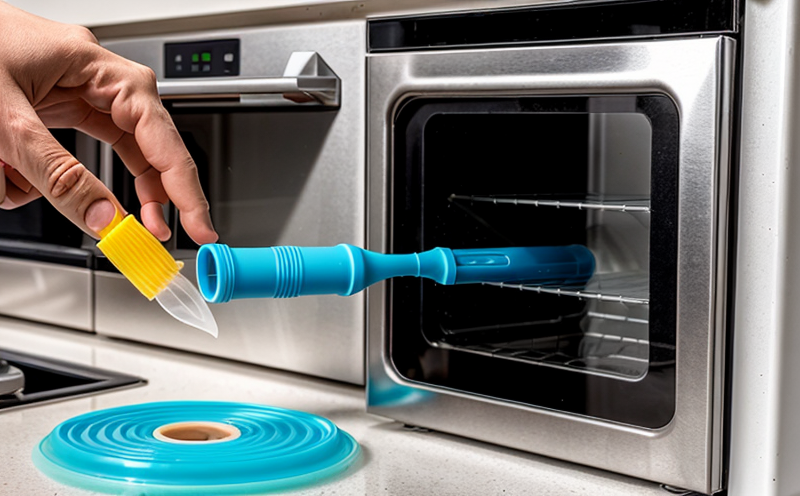ASTM D790 Flexural Testing for Household Plastic Materials
The ASTM D790 standard provides a method for determining the flexural properties of solid plastic materials. This service is particularly crucial in the household plastics sector, where durability and reliability are paramount.
Household plastics encompass a wide range of products used daily by consumers, including kitchen utensils, toys, appliances, and packaging materials. These applications demand robust materials that can withstand frequent use, harsh environmental conditions, and various physical stresses without degrading over time. Flexural testing under ASTM D790 helps ensure the quality and performance of these plastics in real-world scenarios.
The flexural test measures how a plastic specimen bends when subjected to a defined load applied at a specific point along its length. This type of testing is essential for evaluating the mechanical integrity, resilience, and overall strength of household plastics. The results provide critical insights into the material's ability to resist deformation under stress, which is vital for product safety and performance.
The ASTM D790 method involves placing a standard specimen in a three-point bend configuration. A specified load is then applied at a precise location along the specimen length until fracture or yielding occurs. The test calculates key flexural properties such as flexural modulus (E), flexural strength, and flexural strain.
Flexural testing under ASTM D790 offers several advantages for household plastics. By simulating real-world conditions, it helps manufacturers identify potential weaknesses in their products early in the development process. This allows them to make necessary adjustments before proceeding to production, thereby enhancing product quality and safety.
The test's accuracy is further enhanced by its standardized nature, ensuring consistent results across different laboratories. This consistency is particularly important for regulatory compliance and inter-laboratory comparisons. Compliance with ASTM D790 is often a requirement in industries where consumer safety is a concern, such as household goods manufacturing.
Understanding the flexural properties of household plastics through this testing method also aids in optimizing material selection. By knowing how different materials perform under specific stress conditions, manufacturers can choose the most suitable options for their products. This optimization process not only enhances product performance but also contributes to cost-effective design and production processes.
Scope and Methodology
The scope of ASTM D790 flexural testing is broad enough to cover a variety of household plastic materials, including polypropylene (PP), polystyrene (PS), acrylonitrile butadiene styrene (ABS), and others. The method specifies the standard specimen geometry, loading conditions, and environmental factors that must be controlled during testing.
The methodology involves several key steps to ensure accurate and reliable results:
- Specimen Preparation: Specimens are cut to a specific length, width, and thickness as outlined in ASTM D790. Careful attention is paid to the specimen's dimensions to avoid any measurement errors.
- Loading Configuration: The specimens are placed in a three-point bend configuration between two supports. A specified load is applied at a precise location along the specimen length until fracture or yielding occurs.
- Data Collection: During testing, various parameters such as deflection, force, and displacement are recorded to calculate flexural modulus (E), flexural strength, and flexural strain.
The precision of these measurements is critical for obtaining accurate results. Specimen preparation, loading configuration, and data collection methods must strictly adhere to the ASTM D790 specifications.
International Acceptance and Recognition
ASTM D790 flexural testing enjoys widespread recognition and acceptance across various industries due to its rigorous standards and consistent results. Many international standards, including ISO standards, often reference ASTM D790 as a benchmark for assessing the mechanical properties of plastic materials.
Regulatory bodies such as the European Union's New Approach to Industrial Products (NAIP) and the United States Food and Drug Administration (FDA) frequently require compliance with ASTM D790 for household plastics. This ensures that products meet stringent safety and quality standards, enhancing consumer trust and satisfaction.
The international acceptance of this testing method is further bolstered by its use in global supply chains. Manufacturers from different regions often rely on ASTM D790 to ensure that their products perform consistently across diverse markets. This consistency reduces the risk of non-compliance issues and facilitates smoother trade operations.





